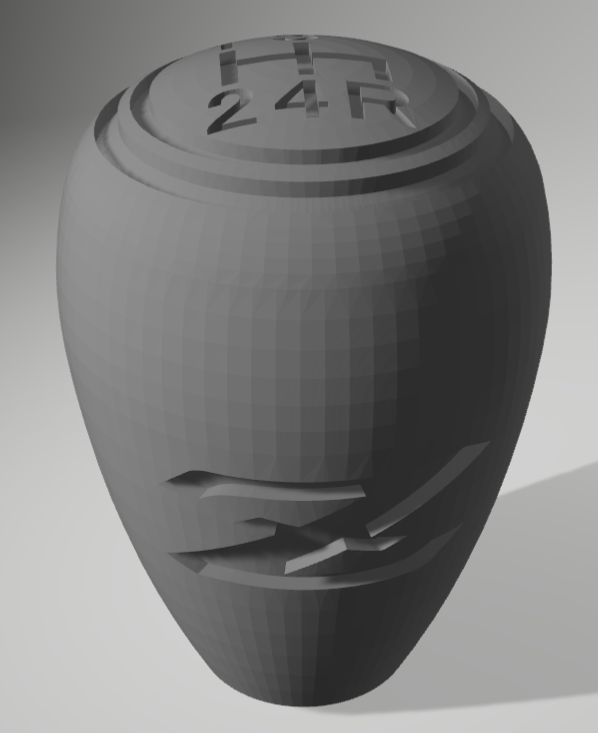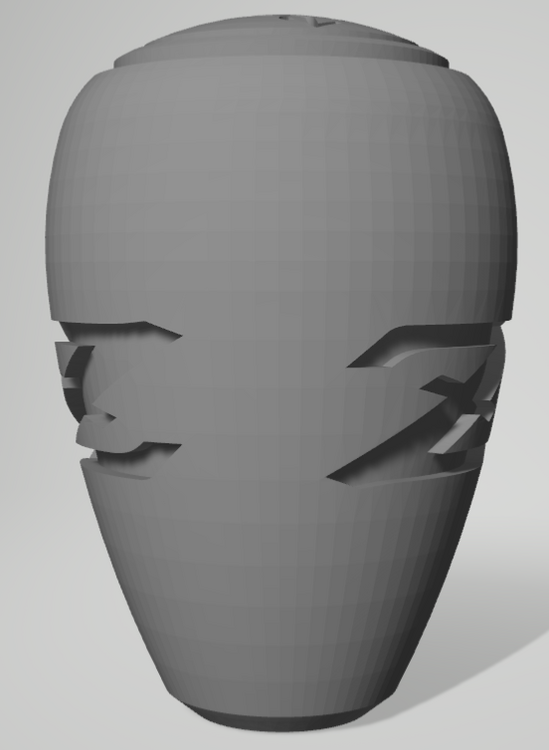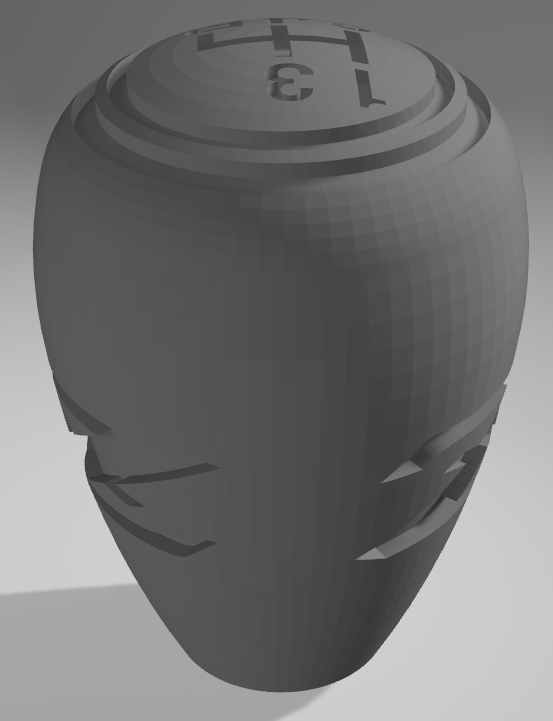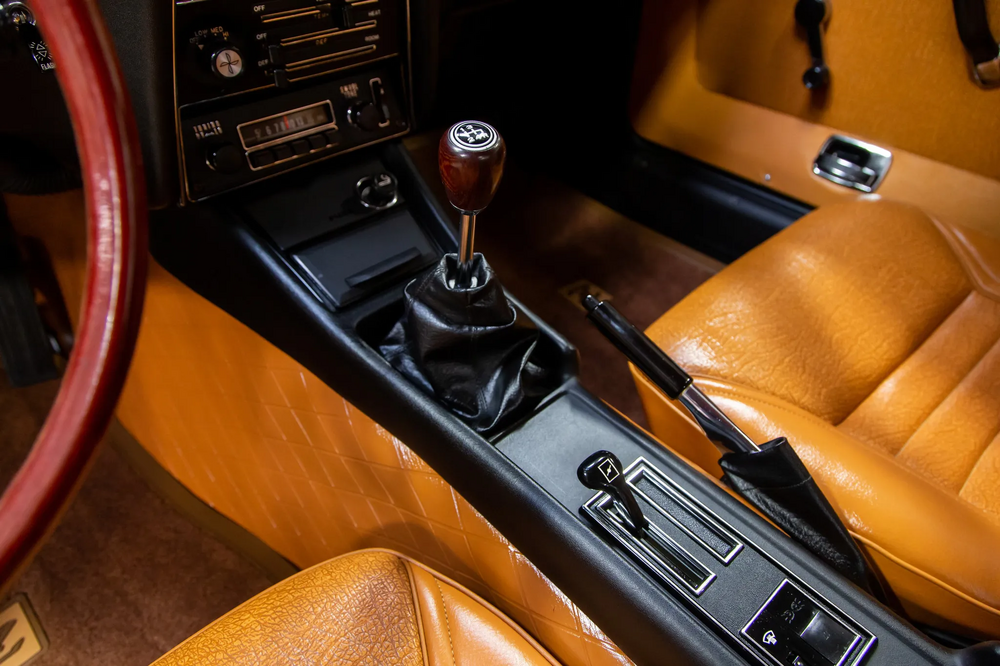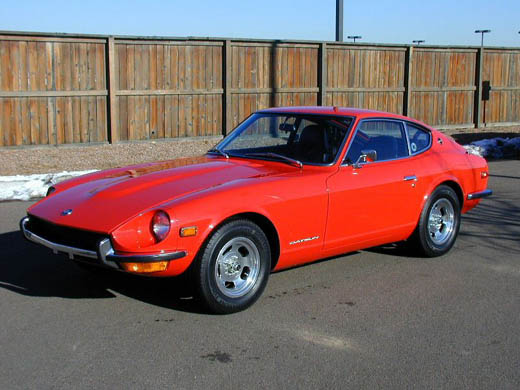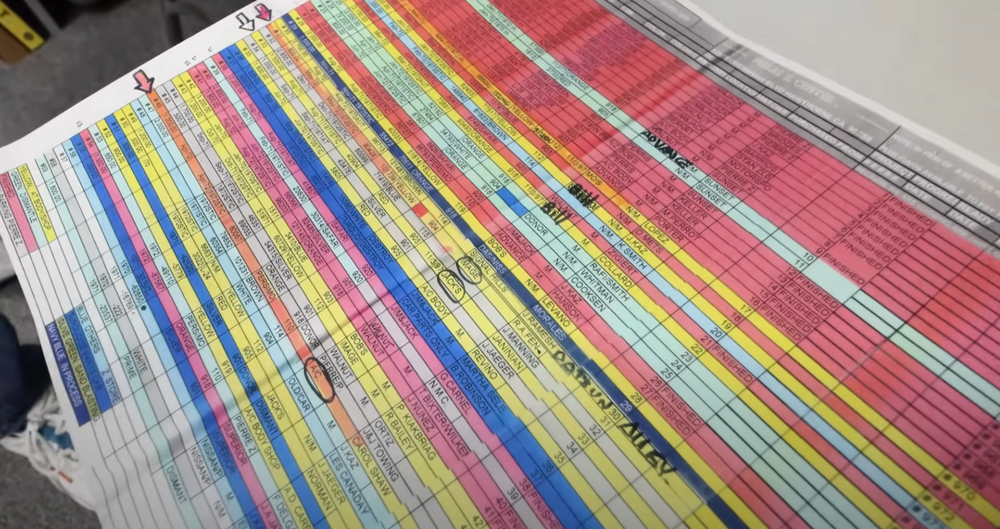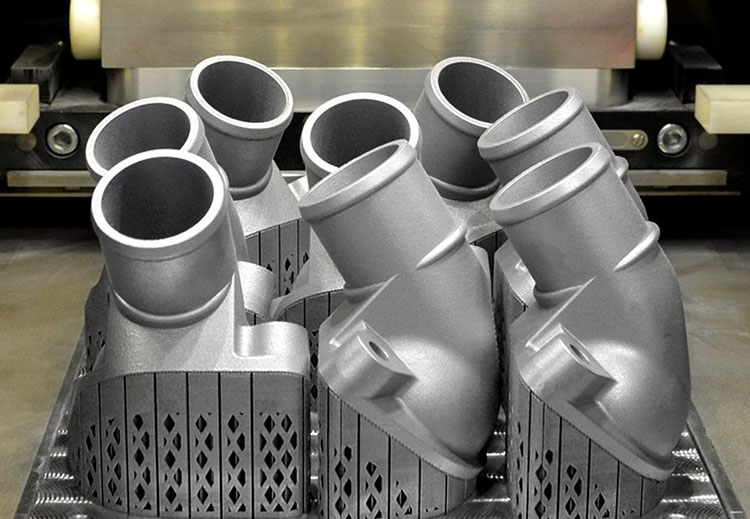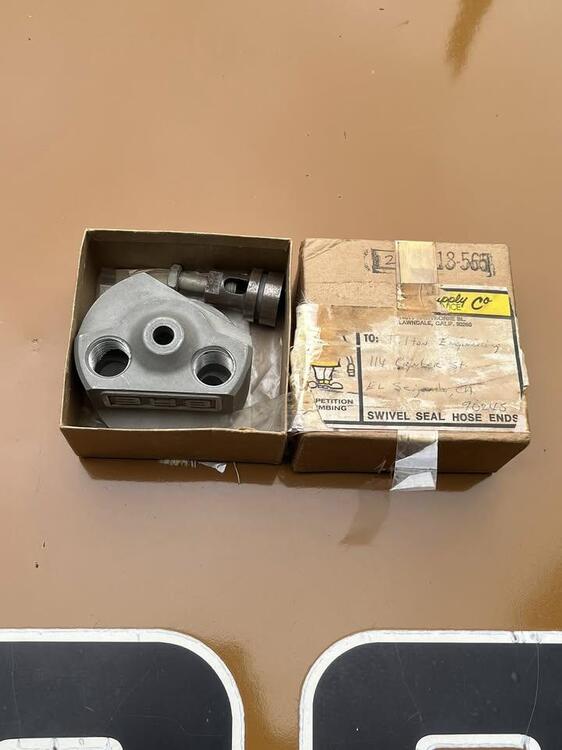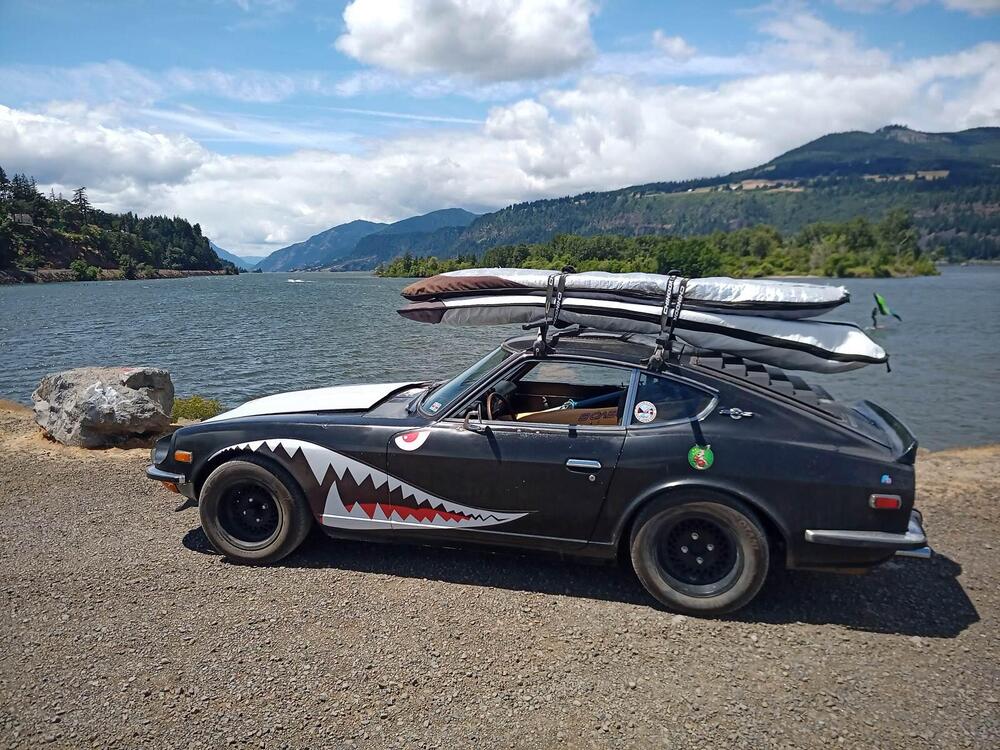
Everything posted by SpeedRoo
-
3D printed Gearknob
Been playing with metal laser sintered 3D printers lately and wanted to create a stainless 240Z gearknob. Went through a number of iterations and ended up with this design. It's the same size and shape as the original 1970 240Z 4 speed one. Will be running the first metal prints next week, will be interesting to see how it turns out. 3 Z logos are engraved on the main part of the body, the original gearchange pattern is enlarged in size to print more cleanly than the original smaller one.
-
Z Restoration Progam
Welcome @HLS30-365101 great to have someone that worked on the program with Pierre here, I'm sure we will have lots of questions for you. Building 240Z by night and planes by day, sounds like a great way to spend your day! What bits did you do on the Restoration program for Pierre?
-
Z's on BAT and other places collection
@zspert can't you do one of your award winning restorations on your self and keep going for another 50 years! Don't forget the yellow paint marks on all your tightened joints and use NOS parts, I'd avoid the cad plating though! Roo
-
Z Restoration Progam
And therein lies the problem Galvanizing and Zinc plating are two totally different processes, the only thing they have in common is Zinc. If the Japanese specification is this vague then there will always be some confusion to what type of coating was used on the parts. Coming back to the Vintage Z restoration program of 1996-98 in the USA; Nissan Motor Corporation USA was very specific that Cad plating be used and listed it repeatedly in their "Quality Control Checklist". They also listed suspension parts be painted semi-gloss black not powder coated. There is no confusion here, it's all in black and white on the document.
-
Z Restoration Progam
Cad plating has much better corrosion resistance than zinc, hence it's use. The Vintage Z program was never about originality but restoring selected 240Z to as new condition with a warranty using parts and processes available in California in 1996-98.
-
Z Restoration Progam
RAE you're barking up the wrong tree yet again, I've made no mention in this thread about the original production cars, this is about the Vintage Z restoration program...plain and simple. To quote my previous post: "Another interesting titbit from the program is that all the nuts and bolts etc were cad plated." Are you always argumentative just for the sake of being so?
-
Z Restoration Progam
In Nissan's 240Z Restoration Program Quality Control Checklist they specifically call out "Cad plating", it was commonly used in California to recondition automobile parts and fasteners at the time. It's banned there now but available in other states. I use it for replating all my parts on Aston Martin restorations. They also mention "Zinc Chromate Tank Slushing" for the fuel tank, so they obviously knew the difference between Cad and Zinc processes. Additionally Nissan mention "Paint semi-gloss black" for suspension components. If you look closely at the photos of the Vintage Z that have been on BAT it is easy to discern between Cad and Zinc, Paint and powder coat.
-
Z Restoration Progam
If Nissan says it's Cad plated then I believe them. Put on your reading glasses RAE and check what they wrote in an official document. All detailed in the Nissan Motor Corporation U.S.A. 240Z Restoration Program Quality Control Checklist. Now I know RAE will come back and say Nissan never used Cad but Gold Zinced the parts on the 240Z, but that may have been the case in Japan. This was a USA program and they sourced services locally in California. Cad plating was not banned from automobiles and parts in California until 2003.
-
Z Restoration Progam
Another interesting titbit from the program is that all the nuts and bolts etc were cad plated.
-
Z Restoration Progam
Dean I don't think that is your car. The Master list has a revision date of Jan 1998, it shows your car as #18 and having been finished. The date in the video of the red car being driven out for test is late April 1998 and the red Vintage Z has silver mag wheels. I think it may be 40904.
-
Z Restoration Progam
Have a look at the Larry Chen's Vintage Z video https://www.youtube.com/watch?v=5_TjHwA1xgE at the 27:24 mark you can see the Master list. There is a column that lists Matching# and M for yes, N/M for no. There are 14 N/M listed. There is also a column for engine#.
-
Z Restoration Progam
Where can a copy be obtained, please advise. @26th-Z is it available as a digital download?
-
Z Restoration Progam
Did @26th-Z ever complete the document/booklet Chris was doing on the Vintage Z program? He mentioned it back in 2005!
-
Z's on BAT and other places collection
I always enjoy it when our resident armchair expert (RAE) from across the pond makes assumptions that turn out to be wrong. To assume he knows the people I speak to for my background information is the level of arrogance, Just as he has done here: "In contrast, one of your "people involved in the program" has knocked out a couple of hardback books - to great fanfare - but which are packed with enough misconceptions, mis-captions and plain old mistakes as to make them all but worthless for entertainment let alone reference material. You'd be well advised to take care in choosing your gurus." I've never spoken to or been in contact with that person, nor do I have his books. Yet again RAE has gone far off the beaten track. Even the people I have spoken to didn't have a lot of good things to say about the program manager you refer to. It's obvious from the photos from the Japanese magazines they are early cars, the cars in the pictures are instantly identifiable from the master list of the Vintage Z build. If you watch the videos @deanhuff posted links to you can see them at Pierre's shop. It's no great mystery but documented evidence. Just as they put the engines in conventionally at the beginning of the program, they got more efficient fitting rebuilt engines supplied by AER from below by lowering the car onto the assembly. Oh I forgot, RAE worships at the house of Japanese superiority and how could they be wrong having put some photos in a Japanese magazine. The VZ program was an American program, done in the USA and sold in the USA, not sure how the Japanese had much if anything to do with it.
-
Z's on BAT and other places collection
Have uploaded the file to the archives.
-
240Z Restoration Program
- 6 downloads
- Version 1.0.0
Inspection document and checklist for build of Nissan Vintage 240Z program.Free -
Z's on BAT and other places collection
Love the videos, lots of detail on how they built the cars up. Great find after all these years.
-
Z's on BAT and other places collection
The document is 34 pages long, it doesn't mention who did the work. It also doesn't mention who did the body restoration, paint and assembly. There were at least 5 Datsun restoration companies involved in the program. There is a master sheet listing all the cars and the companies responsible for each one. Two of them confirmed to me the engines and gearbox were sent out to be rebuilt, that's from people involved in the program and not armchair experts who had nothing to do with it. Now that doesn't mean every single engine was sent out, the early ones may have been built up to check the process and parts required. If you watch the videos @deanhuff linked to you can see the different companies involved. @zspert was one of those who worked closely with Pierre and also supplied parts to the program. I tend to listen when he speaks!
-
1971 HLS30-14938 "Lily" build
I love the fact you get the kids involved in rebuilding the Datsuns. Keeping the hobby alive going forward is getting harder to do. Let's hope they keep up their enthusiasm.
-
Z's on BAT and other places collection
From what I understand the fist batch of rebuilt engines were rejected and returned to be rebuilt. Metal bits from machining were found in the engines. Everything was done to time and budget constraints, quality may have suffered because of this.
- Racing Mirror Gaskets
- Racing Mirror Gaskets
-
BRE IMPROVED 240Z
Managed to find a couple of the BRE cast aluminum adapters recently. https://www.ebay.com/itm/317146279997?_skw=Datsun&itmmeta=01K22V8ZHVKDFD1YZ2R67FYVVG&hash=item49d764303d:g:5ZgAAeSwYvNokRsm&itmprp=enc%3AAQAKAAAA4MHg7L1Zz0LA5DYYmRTS30kCoKfIwvB5xxhwqLfQsN2nCxk2lPQjX3YKVMYwrxYpvqUj44P448Su9W0IOyv9xeIAWjVrCeP8Fr2QU1TY9e7pNLlaT0BG9tj5zLexgY7byGGuH2yDK0OiyU3vR5fkXWKKN3IQdcSYmXNnnPXjRhXS2So%2FSPgQZXBaYiIZLQCVX3X7Vna%2FqJOosiRjsA69htfeltceq2Cf7k2gmZCY6J8H8hKNyQdK0sBnsetXbfjln%2FMlmTzAAStHKN2erVuANzBT9%2FZ1nAhivjZ33R04f%2B9W%7Ctkp%3ABk9SR4z5o9uQZg
-
The OG 240Z - Reanimation Project
One thing I never skimp on is fire extinguishers. I'd go with this one for your Z. https://www.h3rperformance.com/products/halguard-pro-halon-clean-agent-car-fire-extinguisher-1-25lbs Not cheap but very effective. Love the registration tags, part of the cars history @Captain Obvious Mine still has the original license plates from when it was new in Roseburg Oregon in October 1970, found the original plate frame from the selling dealer Burness Datsun. Even got a copy of the original title from the DMV.
-
The OG 240Z - Reanimation Project
Well done @Captain Obvious another one saved! I did the same with my August 1970 that languished in a garage from 1983 to 2018. Engine was seized and brakes stuck on. Dragged it home and rebuilt the suspension/brakes and got the engine going. I use it as my beach bomb to go windsurfing. One day I'll restore it but until then it gets used.





